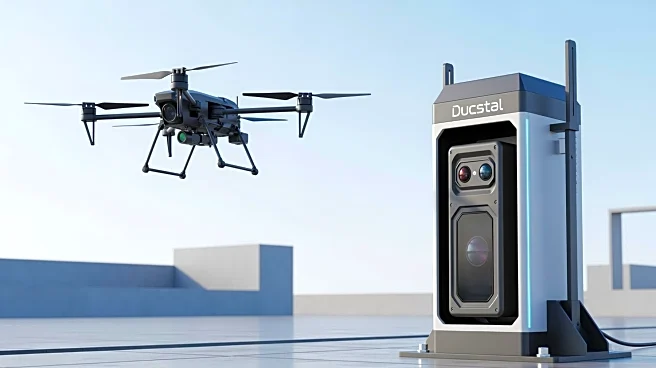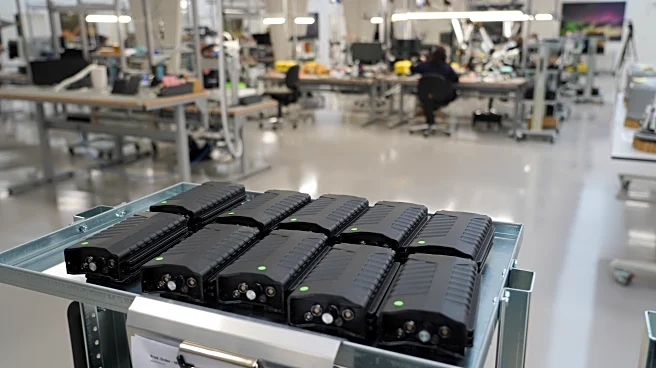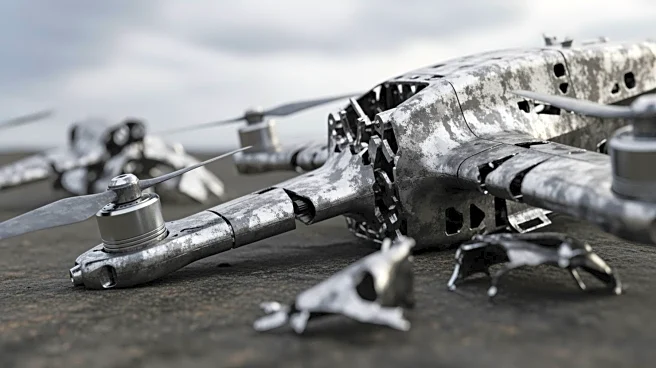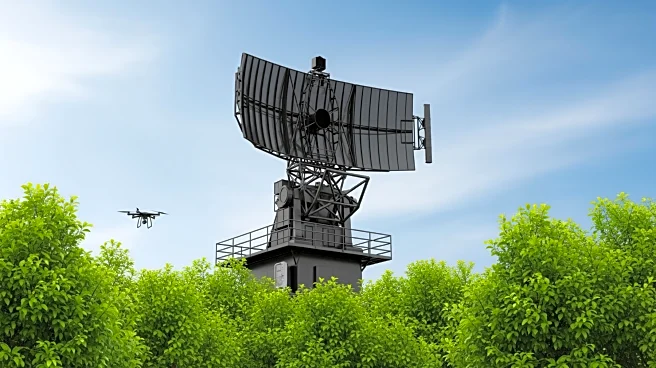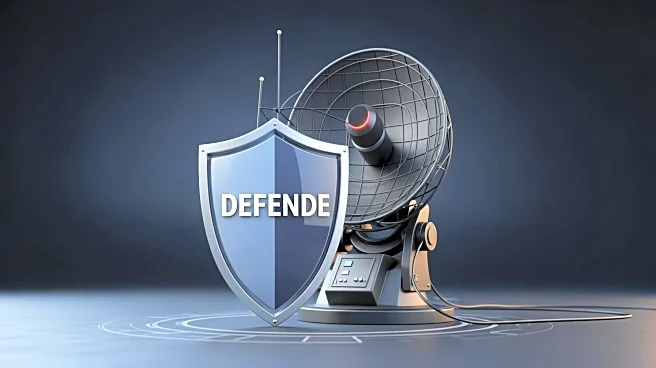What's Happening?
NATO has deployed a new U.S. anti-drone system to its eastern flank in response to increased drone incursions into European airspace. The deployment follows a surge in drone flyovers, which have raised
concerns about the alliance's preparedness against potential threats from Russia. European leaders have agreed to develop a 'drone wall' to better detect and intercept drones violating airspace. The incidents have prompted a rapid deployment of counter-drone systems across Europe, with Denmark, Poland, and Romania utilizing the American Merops system to defend against drones. This system uses artificial intelligence to navigate and identify drones even when electronic communications are jammed.
Why It's Important?
The deployment of anti-drone technology is crucial for NATO's defense strategy, particularly in light of Russia's aggressive actions in Ukraine. The ability to detect and neutralize drones is essential for protecting critical infrastructure and maintaining security across Europe. The incidents have highlighted vulnerabilities in NATO's airspace defense, prompting a reevaluation of current systems and strategies. The increased focus on drone technology reflects the evolving nature of warfare, where unmanned aerial vehicles play a significant role. This development could lead to further investments in defense technology and strengthen NATO's deterrence capabilities.
What's Next?
European countries are expected to continue enhancing their drone detection and interception capabilities. The proposed 'drone wall' could become a significant part of Europe's defense infrastructure, potentially involving collaboration among NATO members to share technology and intelligence. The situation may also lead to increased diplomatic efforts to address the security challenges posed by drone warfare. As the technology evolves, NATO and its allies will likely invest in more advanced systems to ensure comprehensive protection against aerial threats.
Beyond the Headlines
The rise in drone incursions has broader implications for international security and defense policies. It underscores the need for international cooperation in regulating drone technology and addressing the ethical and legal challenges associated with its use. The situation also highlights the importance of developing robust cybersecurity measures to protect against potential drone-related threats.
